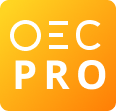Overview This page contains the latest trade data of Mixtures with HBFCs. In 2023, Mixtures with HBFCs were the world's 5589th most traded product, with a total trade of $205k. Between 2022 and 2023 the exports of Mixtures with HBFCs decreased by -94.3%, from $3.61M to $205k. Trade in Mixtures with HBFCs represent 9.1e-7% of total world trade.
Mixtures with HBFCs are a part of Halogenated hydrocarbon mixtures.
Exports In 2023 the top exporters of Mixtures with HBFCs were Germany ($101k), United States ($76k), Russia ($8.91k), South Africa ($7.11k), and China ($6.35k).
Imports In 2023 the top importers of Mixtures with HBFCs were Spain ($99.8k), Canada ($76k), Costa Rica ($11.3k), Kazakhstan ($8.91k), and Namibia ($7.01k).
Ranking Mixtures with HBFCs ranks 442nd in the Product Complexity Index (PCI).

